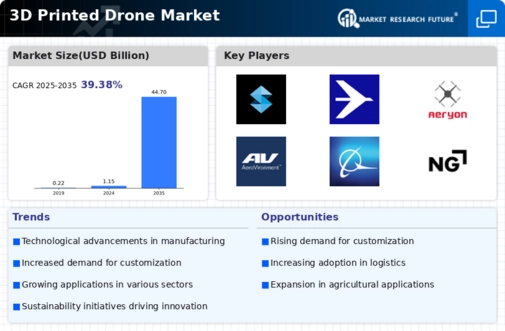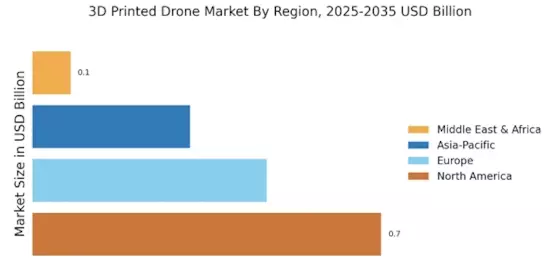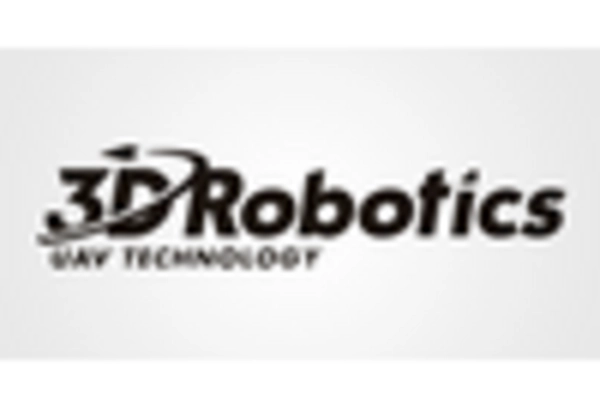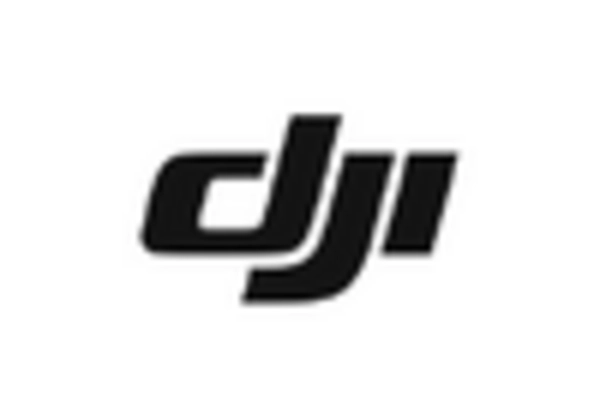Regulatory Support and Frameworks
The 3D Printed Drone Market is benefiting from evolving regulatory support and frameworks that facilitate the integration of drones into airspace. Governments are increasingly recognizing the potential of drones for commercial use and are establishing guidelines to ensure safe operations. This regulatory clarity is encouraging investment and innovation within the 3D Printed Drone Market. For instance, the Federal Aviation Administration has implemented rules that streamline the approval process for commercial drone operations, which is likely to boost market growth. As regulations become more favorable, manufacturers are expected to invest more in 3D printing technologies, further enhancing the capabilities and applications of drones.
Advancements in Materials and Technology
The 3D Printed Drone Market is significantly influenced by advancements in materials and technology. Innovations in lightweight and durable materials, such as carbon fiber composites and advanced polymers, are enhancing the performance and capabilities of 3D printed drones. These materials not only improve flight efficiency but also extend the lifespan of drones, making them more appealing to consumers. Furthermore, the integration of smart technologies, such as AI and IoT, into drone design is creating opportunities for enhanced functionality. As these advancements continue to evolve, they are likely to drive the 3D Printed Drone Market forward, enabling manufacturers to produce drones that meet the increasing demands of various applications.
Growing Focus on Research and Development
The 3D Printed Drone Market is experiencing a growing focus on research and development (R&D) as companies strive to innovate and stay competitive. Investment in R&D is crucial for developing new technologies and improving existing products. Many firms are allocating significant resources to explore new applications for 3D printed drones, such as in emergency response and environmental monitoring. This emphasis on R&D is likely to yield breakthroughs that enhance the functionality and efficiency of drones. As companies continue to push the boundaries of what is possible with 3D printing, the 3D Printed Drone Market is expected to expand, driven by innovative solutions that meet emerging market needs.
Cost Efficiency and Reduced Production Time
The 3D Printed Drone Market is experiencing a notable shift towards cost efficiency and reduced production time. Traditional manufacturing methods often involve high labor costs and extended lead times. In contrast, 3D printing technology allows for rapid prototyping and production, significantly decreasing the time from design to deployment. Reports indicate that companies utilizing 3D printing can reduce production costs by up to 50%, making it an attractive option for manufacturers. This efficiency not only lowers the barrier to entry for new players in the market but also enables existing companies to innovate more rapidly. As a result, the 3D Printed Drone Market is likely to see an influx of new designs and applications, further driving market growth.
Increased Demand for Drones in Various Sectors
The 3D Printed Drone Market is witnessing an increased demand for drones across various sectors, including agriculture, logistics, and surveillance. The versatility of drones has led to their adoption in diverse applications, such as crop monitoring, package delivery, and infrastructure inspection. According to recent data, the commercial drone market is projected to reach USD 43 billion by 2024, indicating a robust growth trajectory. This surge in demand is propelling the 3D Printed Drone Market, as manufacturers seek to create specialized drones tailored to specific industry needs. The ability to customize designs through 3D printing further enhances the appeal of drones, allowing for rapid adaptation to changing market requirements.


















Leave a Comment